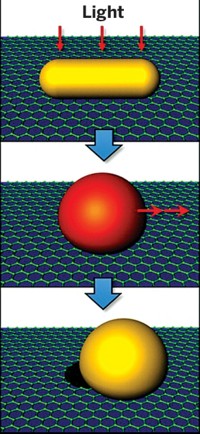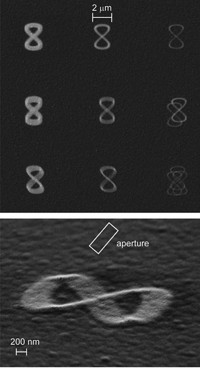Advertisement
Grab your lab coat. Let's get started
Welcome!
Welcome!
Create an account below to get 6 C&EN articles per month, receive newsletters and more - all free.
It seems this is your first time logging in online. Please enter the following information to continue.
As an ACS member you automatically get access to this site. All we need is few more details to create your reading experience.
Not you? Sign in with a different account.
Not you? Sign in with a different account.
ERROR 1
ERROR 1
ERROR 2
ERROR 2
ERROR 2
ERROR 2
ERROR 2
Password and Confirm password must match.
If you have an ACS member number, please enter it here so we can link this account to your membership. (optional)
ERROR 2
ACS values your privacy. By submitting your information, you are gaining access to C&EN and subscribing to our weekly newsletter. We use the information you provide to make your reading experience better, and we will never sell your data to third party members.
Materials
Atom Manipulation Crosses New Threshold
Researchers drag ions over insulating surface at room temperature, assemble them into Swiss icon
by Lauren K. Wolf
July 21, 2014
| A version of this story appeared in
Volume 92, Issue 29
In a teeny tiny display of patriotism, a team led by researchers at the University of Basel has created the world’s smallest Swiss national flag out of ions (Nat. Commun. 2014, DOI: 10.1038/ncomms5403). To generate the flag’s iconic cross, the scientists used the tip of an atomic force microscope (AFM) to pick up bromine ions scattered across a sodium chloride surface and move them one by one into formation. With the hope of one day creating atomic-scale electromechanical devices, physicists have been dragging single atoms around and repositioning them on surfaces with scanning probe tips since the 1990s. Usually, the atomic manipulations are carried out on metallic or semiconducting surfaces at very low temperatures. The Swiss cross, however, was generated on an insulating surface—sodium chloride—at room temperature. The researchers accomplished the more difficult task, says team leader Ernst Meyer, because of “tremendous progress” in the sensitivity and stability of AFMs. The team believes it succeeded in building the 20-ion cross because the NaCl-coated AFM tip it used had sodium ions at its apex: These positively charged particles were able to pick up the negatively charged bromines.





Join the conversation
Contact the reporter
Submit a Letter to the Editor for publication
Engage with us on Twitter